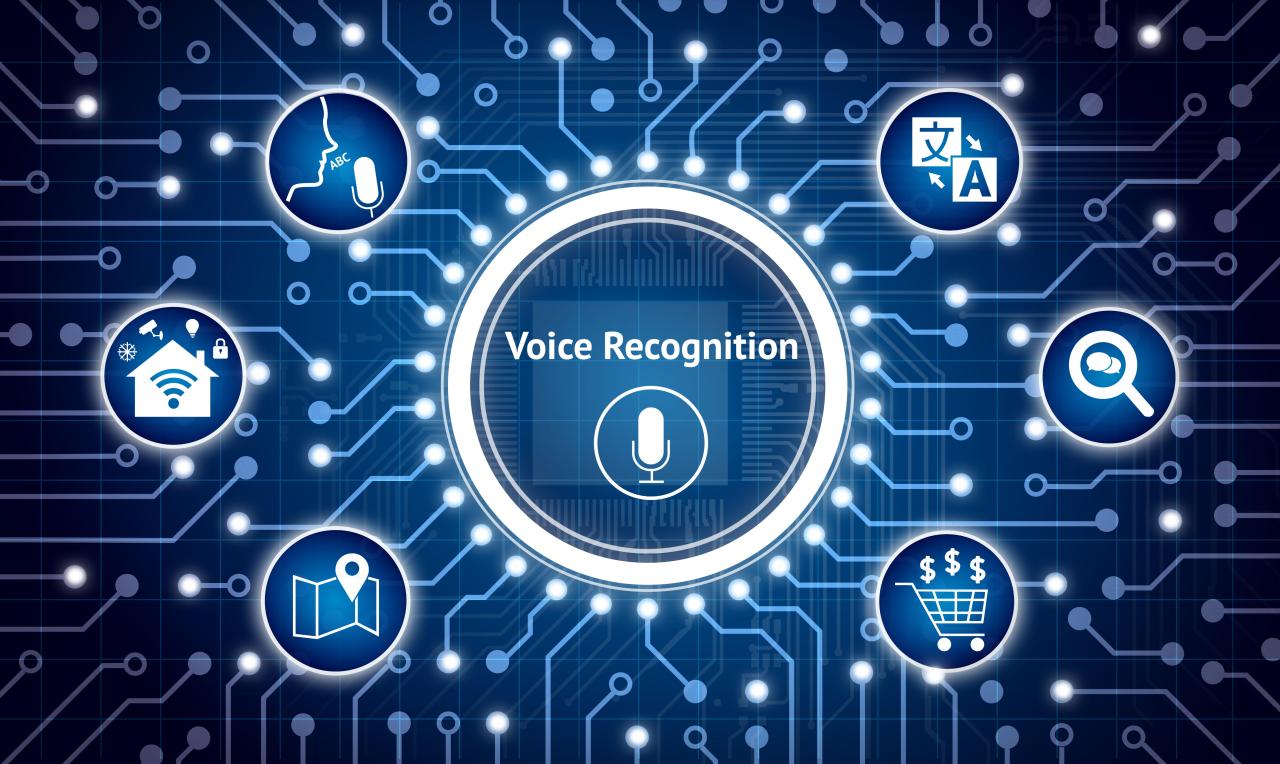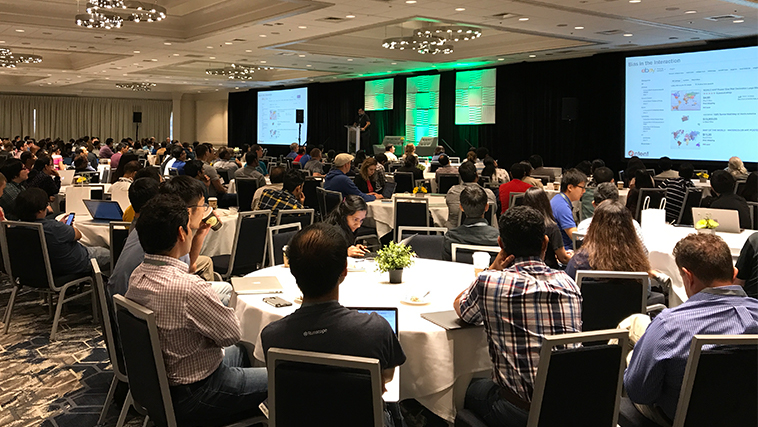Voice Technologies: From Speech Recognition to AI Assistants
Voice technologies, the ability to interact with machines using our voices, have revolutionized the way we communicate and access information. From the early days of clunky speech recognition systems to […]

Voice technologies, the ability to interact with machines using our voices, have revolutionized the way we communicate and access information. From the early days of clunky speech recognition systems to the sophisticated voice assistants we use today, this field has witnessed remarkable advancements.
The emergence of artificial intelligence (AI) and natural language processing (NLP) has significantly accelerated this progress, enabling voice technologies to understand and respond to human language with unprecedented accuracy and nuance. This transformative technology is now seamlessly integrated into our lives, impacting various sectors, from consumer electronics and healthcare to finance and education.
Evolution of Voice Technologies
The evolution of voice technologies has been a fascinating journey, spanning decades and witnessing remarkable advancements. From rudimentary speech recognition systems to sophisticated voice assistants, the field has transformed significantly, impacting various aspects of our lives. This evolution has been driven by innovations in artificial intelligence (AI) and natural language processing (NLP), leading to increasingly sophisticated and user-friendly voice interfaces.
Early Speech Recognition Systems
The foundations of voice technology were laid in the mid-20th century with the development of early speech recognition systems. These systems were limited in their capabilities, primarily focusing on recognizing isolated words or short phrases.
- 1950s: The first attempts at speech recognition were made using acoustic phonetics and pattern recognition techniques. These systems were primarily used in military applications.
- 1960s: Researchers at IBM developed the Shoebox, a system that could recognize 16 spoken words. This marked a significant milestone in the development of speech recognition technology.
- 1970s: The development of Hidden Markov Models (HMMs) significantly improved the accuracy of speech recognition systems. HMMs allowed for the modeling of the statistical properties of speech sounds, leading to more robust and reliable systems.
These early systems faced limitations due to the computational power and the lack of advanced algorithms. However, they laid the groundwork for the advancements that would follow.
Emergence of Modern Voice Assistants
The advent of AI and NLP in the late 20th and early 21st centuries revolutionized the field of voice technology. These advancements led to the development of modern voice assistants, capable of understanding and responding to complex voice commands.
- 1990s: The development of statistical language models and large-scale speech databases further improved the accuracy and robustness of speech recognition systems. This paved the way for the emergence of commercial speech recognition products.
- 2000s: The rise of the internet and mobile devices created a demand for user-friendly interfaces. This led to the development of voice assistants like Siri (Apple, 2011), Google Assistant (Google, 2016), and Amazon Alexa (Amazon, 2014).
- 2010s: Advancements in deep learning and AI significantly improved the capabilities of voice assistants. These systems became more accurate, natural-sounding, and capable of handling more complex tasks.
Modern voice assistants are now integrated into various devices, including smartphones, smart speakers, and cars, offering a range of services, such as information retrieval, music playback, and home automation.
Impact of AI and NLP
The advancements in AI and NLP have been instrumental in shaping the evolution of voice technologies.
- AI: AI algorithms, particularly deep learning models, have significantly improved the accuracy and performance of speech recognition systems. These models are trained on massive datasets of speech and text, enabling them to learn complex patterns and relationships within language.
- NLP: NLP techniques allow voice assistants to understand the meaning and context of spoken language. This enables them to respond appropriately to user queries, even when they are ambiguous or incomplete.
AI and NLP have also enabled voice assistants to learn and adapt to individual users’ preferences, making them more personalized and efficient.
Types of Voice Technologies
Voice technologies are becoming increasingly prevalent in our daily lives, transforming the way we interact with devices and information. These technologies encompass a range of functionalities, enabling us to communicate with machines using our voices.
Speech Recognition
Speech recognition technology converts spoken language into written text. This process involves analyzing sound waves and identifying patterns that correspond to specific words or phrases. The accuracy of speech recognition systems depends on factors such as the quality of the audio input, the speaker’s accent, and the complexity of the language being processed.
Speech recognition finds applications in various fields, including:
- Voice assistants: Devices like Amazon Alexa, Google Assistant, and Apple Siri utilize speech recognition to understand user commands and respond accordingly. These assistants can perform tasks such as setting reminders, playing music, and controlling smart home devices.
- Dictation software: Software programs like Dragon NaturallySpeaking allow users to create documents, emails, and other text-based content by speaking instead of typing.
- Transcription services: Speech recognition technology is used to transcribe audio recordings, such as interviews, lectures, and meetings, into written text.
- Accessibility tools: Speech recognition software enables individuals with disabilities, such as those with mobility impairments or visual impairments, to interact with computers and other devices using their voices.
Speech Synthesis
Speech synthesis, also known as text-to-speech (TTS), converts written text into spoken language. This technology involves using algorithms to create artificial speech that sounds natural and human-like. The quality of synthesized speech depends on factors such as the voice database used, the prosody (intonation and rhythm) of the generated speech, and the complexity of the text being synthesized.
Speech synthesis has numerous applications, including:
- Reading aloud: TTS software can read digital books, articles, and other documents aloud, making it easier for individuals to consume content. This is particularly beneficial for people with dyslexia or visual impairments.
- Navigation systems: GPS navigation systems use TTS to provide spoken directions to drivers, enhancing safety and convenience.
- Customer service: Some companies utilize TTS to generate automated responses to customer inquiries, providing quick and efficient support.
- Accessibility tools: TTS software enables individuals with visual impairments to access information that is presented in written form.
Voice Biometrics
Voice biometrics uses unique characteristics of a person’s voice to identify or authenticate their identity. This technology analyzes various vocal parameters, such as pitch, tone, and rhythm, to create a unique voice print. Voice biometrics can be used for:
- Access control: Voice biometrics can be used to secure access to buildings, devices, and online accounts, replacing traditional passwords or PINs.
- Fraud prevention: By verifying the identity of callers, voice biometrics can help prevent fraudulent transactions or unauthorized access to sensitive information.
- Customer authentication: Voice biometrics can be used to authenticate customers during phone calls or online interactions, enhancing security and personalization.
Voice Search
Voice search allows users to search for information using their voice instead of typing. This technology relies on speech recognition to convert spoken queries into text, which is then processed by a search engine to retrieve relevant results. Voice search has become increasingly popular, driven by the rise of voice assistants and the convenience of hands-free searching.
- Information retrieval: Voice search enables users to quickly find information on a wide range of topics, such as news, weather, directions, and product reviews.
- E-commerce: Voice search can be used to shop online, find products, and compare prices.
- Entertainment: Voice search can be used to find music, videos, and podcasts.
Speech-to-Text vs. Text-to-Speech
Speech-to-text and text-to-speech are two distinct but related voice technologies.
- Speech-to-text (STT) converts spoken language into written text, while text-to-speech (TTS) converts written text into spoken language.
- STT is used for applications like voice assistants, dictation software, and transcription services, while TTS is used for applications like reading aloud, navigation systems, and customer service.
Applications of Voice Technologies

Voice technologies have revolutionized the way we interact with devices and services, bringing about a paradigm shift in how we access information, control our surroundings, and perform daily tasks. This technology has permeated various industries, transforming the way businesses operate and individuals experience the world.
Consumer Electronics
Voice technologies have become ubiquitous in consumer electronics, with smart speakers and voice assistants leading the charge. These devices allow users to control their home appliances, access information, play music, and even make calls, all with the power of their voice.
- Smart Speakers: Devices like Amazon Echo, Google Home, and Apple HomePod have become popular household items. These speakers allow users to control their home appliances, access information, play music, and even make calls using voice commands.
- Voice Assistants: These digital assistants, such as Siri, Google Assistant, and Alexa, are integrated into smartphones, tablets, and other devices. They offer a wide range of functionalities, including setting reminders, scheduling appointments, sending messages, and providing directions.
The benefits of voice technologies in consumer electronics are undeniable. They offer convenience, accessibility, and a more intuitive user experience. However, challenges remain, including privacy concerns, security vulnerabilities, and the potential for misuse.
Healthcare
Voice technologies are increasingly being used in healthcare, transforming various aspects of patient care and medical practice.
- Medical Transcription: Speech-to-text software helps transcribe medical records, reports, and other documents, reducing the time and effort required for manual transcription. This allows healthcare professionals to focus on patient care rather than administrative tasks.
- Patient Monitoring: Voice-activated systems can monitor patients’ vital signs, detect changes in their condition, and alert healthcare providers in real time. This can be particularly useful for patients with chronic conditions or those who require remote monitoring.
Voice technologies in healthcare offer numerous benefits, including improved efficiency, enhanced accuracy, and better patient outcomes. However, challenges exist, such as ensuring data privacy and security, integrating voice systems with existing healthcare infrastructure, and addressing ethical considerations related to patient consent and data ownership.
Automotive
Voice technologies have become integral to the automotive industry, enhancing driver safety and convenience.
- Voice-Controlled Navigation: Voice-activated navigation systems allow drivers to input destinations, receive directions, and access real-time traffic updates without taking their hands off the steering wheel.
- In-Car Assistants: Voice assistants like Alexa and Google Assistant are now available in many vehicles, enabling drivers to make calls, play music, send messages, and control various vehicle functions using voice commands.
Voice technologies in automotive offer significant benefits, such as increased safety, improved driver experience, and enhanced connectivity. However, challenges remain, such as ensuring the reliability and accuracy of voice recognition in noisy environments, addressing privacy concerns related to voice data collection, and integrating voice systems seamlessly with vehicle systems.
Finance
Voice technologies are revolutionizing the way we interact with financial institutions, making banking services more accessible and convenient.
- Voice-Based Banking Services: Voice assistants can be used to check account balances, transfer funds, pay bills, and access other banking services through voice commands.
- Fraud Detection: Voice recognition technology can be used to authenticate users and detect fraudulent activity by analyzing voice patterns and identifying potential inconsistencies.
Voice technologies in finance offer several benefits, including improved customer experience, increased efficiency, and enhanced security. However, challenges exist, such as ensuring the security and privacy of sensitive financial data, integrating voice systems with existing banking infrastructure, and addressing regulatory compliance requirements.
Education
Voice technologies are transforming the educational landscape, providing innovative tools and resources for students and educators alike.
- Speech-to-Text Tools: Speech-to-text software can help students with learning disabilities or those who struggle with writing to create written content, taking notes, and completing assignments.
- Language Learning: Voice recognition and speech synthesis technologies can be used to create interactive language learning programs that provide personalized feedback and support.
Voice technologies in education offer significant benefits, including increased accessibility, personalized learning experiences, and improved engagement. However, challenges remain, such as ensuring the accuracy and reliability of speech recognition in diverse language contexts, addressing accessibility issues for students with hearing impairments, and integrating voice technologies seamlessly with existing educational platforms.
Voice User Interface (VUI) Design: Voice Technologies
Designing intuitive and user-friendly voice interfaces is crucial for the success of any voice-enabled application. A well-designed VUI should seamlessly guide users through interactions, providing a natural and engaging experience.
Design Principles for Intuitive Voice Interfaces
Designing intuitive voice interfaces requires considering several key principles:
- Keep it simple and concise: VUI instructions should be clear, brief, and easy to understand. Avoid complex language or lengthy prompts.
- Use natural language: VUI should mimic natural conversation, allowing users to speak in their own words without strict commands.
- Provide clear feedback: Users should receive immediate and relevant feedback on their interactions, such as confirmation messages or audio cues.
- Offer error handling: Design the VUI to gracefully handle errors and misinterpretations, providing helpful prompts or alternative options.
- Consider context: VUI should be able to understand the user’s context, such as location, previous interactions, or device capabilities, to provide personalized responses.
- Provide clear navigation: Users should be able to easily navigate through the VUI, with clear options and paths to complete tasks.
- Test and iterate: Regularly test the VUI with real users and gather feedback to identify areas for improvement.
Importance of Natural Language Understanding, Speech Synthesis Quality, and Error Handling
- Natural Language Understanding (NLU): NLU is essential for interpreting user speech and understanding their intent. A robust NLU system can handle variations in language, dialects, and accents, ensuring accurate interpretation.
- Speech Synthesis Quality: The quality of the synthesized voice significantly impacts user experience. A clear, natural-sounding voice enhances user engagement and comprehension.
- Error Handling: Error handling is critical for providing a seamless user experience. The VUI should gracefully handle errors, such as misinterpretations or unexpected input, providing helpful prompts or alternative options.
Examples of Well-Designed Voice Interfaces, Voice technologies
- Amazon Alexa: Alexa excels in its natural language understanding, providing a conversational and intuitive experience. It offers a wide range of functionalities, from controlling smart home devices to playing music and providing information.
- Google Assistant: Google Assistant utilizes advanced NLU capabilities, allowing users to interact with the device using natural language. It provides a comprehensive suite of features, including voice search, navigation, and task management.
- Apple Siri: Siri focuses on providing a personalized and proactive experience, learning user preferences and providing relevant information. Its seamless integration with Apple devices enhances its usability.
Challenges and Future Directions
While voice technologies have made significant strides, several challenges remain, and the future holds exciting possibilities for innovation and expansion.
Challenges in Voice Technologies
Voice technologies face several challenges that need to be addressed to ensure their widespread adoption and effectiveness.
- Accuracy and Robustness of Speech Recognition: Speech recognition systems are still susceptible to errors, particularly in noisy environments or when dealing with diverse accents and dialects. This can lead to misinterpretations and hinder the user experience.
- Privacy Concerns Related to Voice Data Collection: The collection and storage of voice data raise significant privacy concerns. Users are apprehensive about the potential misuse of their personal information, particularly in the context of sensitive conversations.
- Accessibility for Diverse Users: Ensuring accessibility for users with diverse languages, accents, and disabilities remains a challenge. Voice technologies need to be adaptable to different speech patterns and cater to individuals with hearing impairments or speech impediments.
Future Directions in Voice Technologies
The future of voice technologies is bright, with advancements in artificial intelligence (AI) and natural language processing (NLP) driving the development of more sophisticated and intuitive voice assistants.
- Advancements in AI and NLP for More Sophisticated Voice Assistants: AI and NLP are expected to play a crucial role in enhancing the capabilities of voice assistants. Advancements in these fields will enable voice assistants to understand complex language, respond to nuanced queries, and provide more personalized and context-aware experiences. For example, Google Assistant and Amazon Alexa are constantly being improved to better understand user intent and provide more relevant information and actions.
- Integration of Voice Technologies with Other Emerging Technologies: Voice technologies are poised to seamlessly integrate with other emerging technologies, such as augmented reality (AR) and the Internet of Things (IoT). This integration will create new possibilities for voice-controlled experiences, such as navigating virtual environments, controlling smart home devices, and accessing information through voice commands. For instance, voice-controlled smart home devices, such as Amazon Echo and Google Home, are becoming increasingly popular, allowing users to control lights, thermostats, and other appliances with their voice.
- Development of New Voice-Based Applications and Services: The future of voice technologies will witness the development of innovative voice-based applications and services across various industries. From voice-driven healthcare diagnostics to voice-controlled e-commerce platforms, voice technology will revolutionize how we interact with technology and access information and services.
Summary
The future of voice technologies holds immense promise. As AI and NLP continue to evolve, we can expect even more sophisticated and intuitive voice assistants that can understand and respond to our needs in more complex and personalized ways. The integration of voice technologies with other emerging technologies like augmented reality and the Internet of Things will further expand their capabilities, creating new possibilities for how we interact with the world around us.
Voice technologies have revolutionized the way we interact with devices. From smart assistants to voice-activated software, these advancements have made technology more accessible and intuitive. For those who appreciate the convenience and innovation of voice technology, a technology gift basket can be a thoughtful and practical gift.
These baskets often include a curated selection of voice-enabled devices, accessories, and other tech gadgets, providing recipients with a comprehensive experience of the latest voice technologies.








